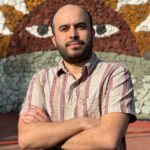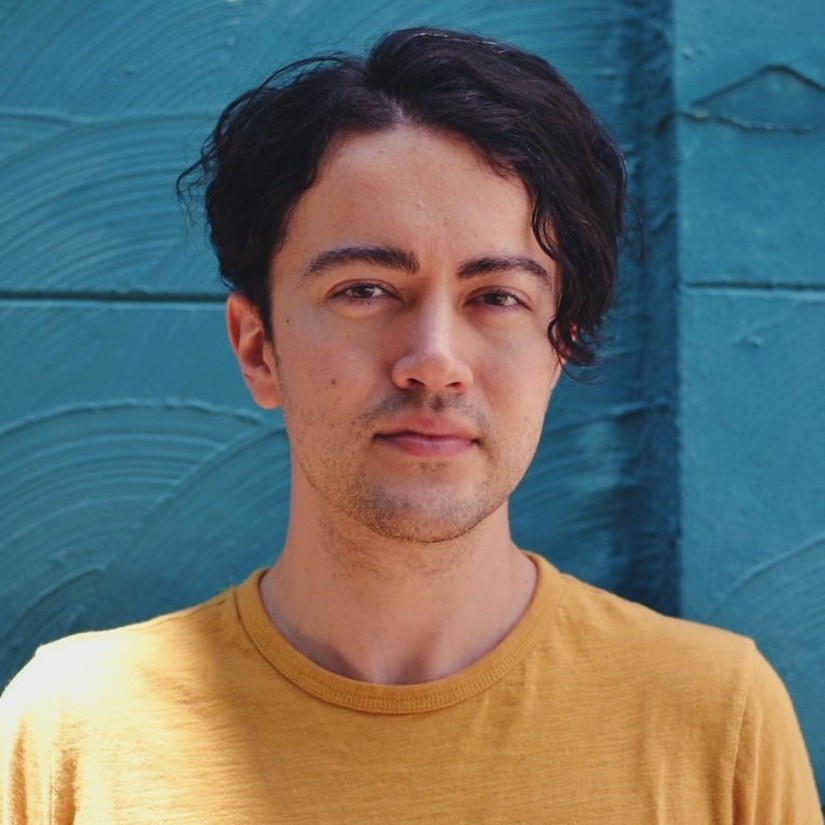Editor’s Note: Where did Juan Rulfo come from? For more than half a century, literary critics have deemed the Mexican author an enigma. With “Erratic Behavior: Juan Rulfo’s Icelandic Connection,” Luis Madrigal became a finalist for the first-ever LALT essay contest in 2023. Our Managing Editor and lead translator, Arthur Malcolm Dixon, translated the essay from Spanish to English.
Sometimes it feels like all critical approaches to Juan Rulfo are detective work. It’s not apparent what the crime is, but there’s plenty of evidence. The conversation over his two books never runs dry; quite the contrary, they serve as mere pretexts or red herrings. “It happened, not long ago,” says Rulfo in a famous interview on Spanish TV, “that they wanted to prepare an issue of a literary journal dedicated to El llano en llamas. So they wanted to photograph the region, the landscape. They never found it.” And he smiles. In Había mucha neblina o humo o no sé qué, Cristina Rivera Garza travels to San Juan Luvina like an old cop returning, years later, to an unsolved case. As soon as Rivera Garza mentions Rulfo’s name to a lady from town, the woman smiles. “Of course she knew him. He was that gentleman who told so many lies about the place she lived, isn’t that right?” In 2003, journalist Reina Roffé published Las mañas del zorro, a biography whose title would also be a great fit for a profile of Al Capone. Like all detectives who spend years on one case, Roffé is obsessed with the contradictions, the lies Rulfo told, his secret life. She watches him drink Coca-Cola at a café on the southside of Mexico City; she follows the tracks of a secret lover in Argentina; she documents the writer’s life at a Catholic seminary. More than a critical appraisal, the book is a casefile.
Both El llano en llamas (1953) and Pedro Páramo (1955) are often taken in evidence. But evidence of what, exactly? Every prosecutor puts together a different case. Once, at Emmanuel Carballo’s house, Rulfo came face to face with a library with “several bookcases dedicated to his work; out from one shelf poked the slender spines of his books, followed by an impressive number of others that were, in fact, doctoral theses,” as Roffé tells it. Shelves full of books to explain two that would fit in your pocket. Such mammoth attention speaks to the uniqueness of the object studied. Or its supposed uniqueness, at least. There is nothing quite like Juan Rulfo, all these theses tell us, not even the man himself. His silence in print after these two books—and his lack of early work that might allow for contrast or bring to light some creative evolution—lead all spotlights to shine on these two or three hundred pages. You don’t have to read much to find that, when Pedro Páramo comes up, critics persistently ask one question: Was Rulfo a genius or did he get lucky? Both are exceptional conditions. And, in a vicious circle, exceptionality demands scrutiny.
It wasn’t just that his work was sparse—there are other Mexican writers who published a single novel or two stories in a magazine, and they don’t get the same treatment or critical attention—but also that its form and content were cause for astonishment. What Rulfo was doing was different; his books plotted “never-before-seen paths” on the map of Mexican literature, as Rivera Garza contends. No one knew exactly where these campesinos who spoke as if in verse had come from, and no one knew how Rulfo had come up with the fragmentary structure and standstill timeframe of Pedro Páramo. According to Rivera Garza’s reading, Rulfo—like no one else in Mexican literature before him—shows us a woman’s body as lustful, and even includes notions of gender fluidity. Such innovations “aroused suspicion and qualms from even his closest friends,” says Roffé. There, in suspicion, the detective’s work begins.
Rulfo’s Mexicanness did not rely on the real Comala. It was a way of explaining his genius, while also boosting the legitimacy of the Mexican state that had produced him.
There were, in principle, two places these books could have come from, which are the same places all literature comes from: experience or reading. Rulfo’s biography became a well so rich we are drinking from it still. Rulfo was frequently asked in interviews to tell his life story. Orphan at an early age, child in Jalisco countryside landscapes like the ones in his books, lonely young man in an orphanage. Shadowy bureaucrat in Mexico City, migration agent, workers’ foreman at a tire company. Traveling salesman, amateur mountaineer, photographer, frustrated seminarian. His inspiration, his stories had to come from somewhere. Rulfo insisted that his literature had not a single autobiographical element; his critics insisted on the opposite. “The only thing that’s real,” he told Spanish journalist Joaquín Soler Serrano, “is the location.” As we know, Comala is a real town in the Mexican state of Colima, but Comala, the land “in the very mouth of hell,” the “town without noises” but “full of echoes,” does not exist.
Rulfo’s Mexicanness did not rely on the real Comala. It was a way of explaining his genius, while also boosting the legitimacy of the Mexican state that had produced him. A postrevolutionary state, under construction midway through the 1950s, that was also eager to cement its national identity through shared cultural images. Jalisco was rife with such images. With good reason, historian Jean Meyer has said the Jaliso region could be considered “the paradigm of ‘Mexicanness’: charros, bulls, machismo, a soccer team where no foreigner has ever played, religiousness, devotion to marriage, frenchification, etc.” It was only right that Rulfo should be from Jalisco because, through him, this stereotype was not denied but rather subverted, almost broadened. Now western Mexico was also the land of Mexican letters (other canonical writers also hailed from there, such as Juan José Arreola and Agustín Yáñez), where the supposed Mexican fashion of relating to death, poverty, and violence found its most potent lyrical expression.
You need not be an alchemist to know all notions of national purity and authenticity dissolve in the acid of even the kindliest criticism. Rulfo’s supposedly archetypical Mexicanness is an artifice like any other. Rulfo’s reality is manipulated (like all realities), fabricated (like all realities). A Mexico—the word appears only once in all Rulfo’s work, and symptomatically refers to somewhere else, outside his characters’ world—that “never existed, but that we all believe in,” as Rivera Garza would say.
Firsthand experience of the surrounding country thus showed itself to be insufficient to explain Rulfo. “I have never been able to describe what I see, nor what they tell me, nor what I hear,” the author insisted. “I have never used real things to write.” And, on that note, the detectives turned their eyes to his library. Maybe there they would find the elements with which the author had built his world. Many were curious, for example, to know if he had read William Faulkner before writing Pedro Páramo. Rulfo, in Roffé’s words, “always fearful that his work’s originality might be denied, said no,” although his friends at the time, Juan José Arreola and Antonio Alatorre, told a different story.
Every interview of Rulfo, besides the biographical digression, also included questions about his reading habits: what he read as a boy (when, as he told it, the town priest asked his grandmother to safeguard a library full of books banned by the Vatican, and he read Dumas and Victor Hugo); what he was reading when he wrote Pedro Páramo; what books he would recommend at present. He rewrote the canon every time. Sometimes, the literary production of sixteenth-century New Spain took on capital importance: chronicles, letters, historical accounts. Sometimes he said he had read Faulkner; other times he said he had a great deal in common with José María Arguedas. Rulfo was a heterodox, diverse reader who quoted indigenous legends alongside Von Rezzori, Mujica Láinez, and Bombal. He read “inside and outside the established canons,” Rivera Garza writes: an exercise of peripheral reading that fit in well with his relatively marginal position within the mid-century Mexican literary scene.
Rulfo was, then, someone who shirked fashion. An avant-garde writer who did not choose what to read from the options touted by his Latin American peers—Joyce, Woolf, Kafka, Musil—but rather leaned toward peripheral options that, until today, seem atypical for a Mexican writer. “I once had the theory,” Rulfo said, “that literature was born in Scandinavia, in northern Europe, then moved down to central Europe and spread from there to other places.”
Scandinavia? It’s like a movie scene: a police chief assigns an old case to a rookie detective. The rookie flicks through the casefile with little hope. “Who hasn’t tried this already?” he wonders. He holds in his hands a report dated 1982. And he reads: “Juan Rulfo tended toward the literary production of the Nordic outskirts of Europe (Norway, Sweden, and Denmark, but also Finland and Iceland), from two successive periods: the end of the nineteenth century to the start of the twentieth, and the interwar years.” The rookie looks up, wide-eyed. He turns around and sees the rest of his colleagues reading calmly. This changes everything, he thinks. Who had ever heard of this Scandinavian clue? Or rather, who had ever paid it any mind? Even when Rulfo himself had seen fit to repeat it. In a 1959 interview with José Emilio Pacheco, he says, “One of my greatest pleasures as a reader comes from the German and Nordic school of the early 1900s […] There I found the foundations of my literary faith.”
This is a full-fledged confession. The rookie may be a rookie, but he’s done his reading, and he knows people who’ve done their reading, and no one had ever said a word to him about Rulfo and the Scandinavian connection, this Nordic evidence. In the report that blew the lid off, the prosecutor at the time—a Uruguayan, last name Rama—even left a crystal-clear note: “Not enough attention has been paid to this erratic behavior, which is regardless quite significant.”
But there’s more. In 1974, Rulfo told Joseph Sommers he had already run through the few Nordic authors known in Mexico at the time. He had “absorbed” the books of Knut Hamsun of Norway, which took him to “planes hitherto unknown.” Every time he spoke of Scandinavian literature, the same names came up: Hamsun, Lagerlöf, Jacobsen, Laxness. One researcher, last name Martínez Børresen, has already studied the former. The latter inspired great interest in Rulfo but little critical attention. “Halldór Laxness was a true discovery for me,” he told Sommers. “That was long before he received the Nobel Prize.” To Pacheco: “Fernando Benítez and I became interested in him and made his novels available to read in Mexico.” In another interview, Sergio Pitol tells Reina Roffé, “[Rulfo] had also read the Nordic writers, especially one whom almost no one remembers, who is extraordinary, the Icelander Halldór Laxness. And when those names were brought up, Rulfo came back to life.”
Who was this Icelandic miracle worker able to raise the dead? In Roffé’s words, Laxness was “fundamental” to Rulfo. Suspiciously, this assessment does not match the amount of space the biographer dedicates to the Icelander. Laxness takes up barely a paragraph in a book more than 250 pages long. “Laxness’s themes have certain points in common with Rulfo’s,” Roffé writes. “Both authors deal with agricultural crises and the problems that give rise to caciquism and exploitation of rural laborers.” And that’s all she wrote.
If you type the names “Rulfo” and “Laxness” into WorldCat (the vast archive of publications all over the world), you’ll find just one result: Tras los murmullos, a 2010 book published by the University of Copenhagen. The only section of this book that specifically mentions Laxness is just four paragraphs long. Its conclusions are equally laconic: “Like Rulfo in his work, Laxness finds his starting point in the description of an abandoned, isolated place, apparently lacking in any importance. Like in ‘Acuérdate,’ Salka Valka, the novel’s (eponymous) protagonist, the outsider who comes into town anyway, is a young man who falls victim to the community’s humiliations. And, like in ‘Es que somos muy pobres,’ puberty and growing breasts are described with fatal force.”
C’est tout. In A Companion to Juan Rulfo, Steven Boldy writes, “Rulfo and those close to him have preferred to insist, in an attempt to control the filiation and meaning of his texts, but with scarce stylistic and thematic evidence, on the influence of northern writers such as Knut Hamsun and Halldór Laxness.” Maybe, then, there is not much more to say on the subject. Maybe Rulfo read him, liked him, and recalled him in a couple of interviews. Maybe he exaggerated his importance. Maybe it was another one of those red herrings. Or maybe—but this is all in the mind of the rookie detective, someone who has time and a spark of ambition or ego or who is suddenly overcome by a strange fit of arrogance—no one who has studied the Rulfo case has ever decided, with good reason, to read Laxness’s crowning novel, Independent People, an almost 500-page epic of social realism published in two volumes in 1934 and 1935. What might that novel tell us?



